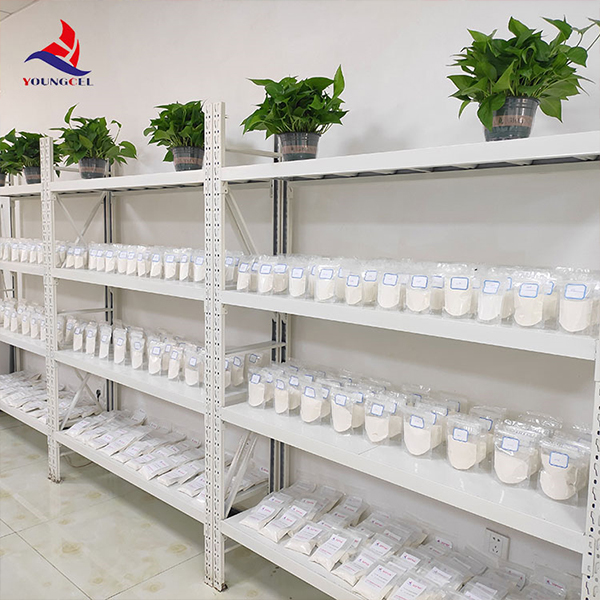Building Adhesives The Unsung Hero of Modern Construction
In the world of construction and architecture, the materials used to join and bond structures play a critical yet often overlooked role in the overall integrity and durability of buildings. Among these materials, building adhesives have emerged as unsung heroes, providing innovative solutions that enhance the safety, efficiency, and aesthetics of constructions.
Building adhesives refer to a range of synthetic and natural substances designed specifically to bond construction materials together. Unlike traditional mechanical fasteners like nails or screws, adhesives offer a continuous bond across surfaces, distributing stress evenly and often providing stronger connections. They are employed in various applications, from assembling wooden beams to fixing glass panels, making them indispensable in modern construction.
Types of Building Adhesives
The market for building adhesives is diverse, featuring numerous formulations tailored for specific applications. The primary types of building adhesives include
1. Polyurethane Adhesives Known for their versatility and strength, polyurethane adhesives are used in wood, metal, and plastic applications. They provide excellent resistance to moisture and temperature variations, making them ideal for both indoor and outdoor projects.
2. Epoxy Adhesives Composed of a resin and hardener, epoxy adhesives form robust bonds and are used extensively in structural applications. They are particularly suited for repairing concrete and bonding metals due to their high tensile and compressive strength.
3. Acrylic Adhesives These adhesives cure quickly and are known for their transparency and flexibility. Acrylic adhesives are often used in applications where aesthetics are essential, such as in glazing or bonding clear materials.
4. Silicone Adhesives Renowned for their flexibility and weather resistance, silicone adhesives are commonly utilized in sealing and bonding applications. They are particularly effective in environments exposed to extreme weather conditions.
5. Contact Adhesives Ideal for bonding large surfaces, contact adhesives are applied to both surfaces before being brought together. They are commonly used in laminating and flooring applications, providing quick and strong bonds.
Advantages of Using Building Adhesives
building adhesive

The use of adhesives in construction offers multiple advantages that facilitate better building practices
- Weight Reduction Adhesives often allow for lighter constructions. By reducing the reliance on heavy mechanical fasteners, overall building weight can be minimized, leading to potential savings in foundation costs and structural support designs.
- Increased Aesthetic Appeal Adhesives create clean and seamless connections between materials. This is particularly advantageous in high-visibility areas, where the visibility of screws and bolts can detract from a building's design.
- Enhanced Durability Quality adhesives can offer resistance to environmental factors such as moisture, chemicals, and temperature fluctuations, contributing to the longevity of a building's structural elements.
- Broader Material Compatibility With advancements in adhesive technology, it is now possible to bond a wide range of materials, including dissimilar substrates like metal to wood or plastic to glass. This flexibility allows architects and builders to explore innovative designs and applications.
Challenges and Considerations
Despite their advantages, the selection and application of building adhesives require careful consideration. Factors such as curing time, application temperature, and surface preparation can greatly influence the effectiveness of the bond. Furthermore, as environmental sustainability becomes increasingly important in construction, there is a growing demand for eco-friendly adhesives free from harmful solvents and chemicals.
Future Trends in Building Adhesives
The future of building adhesives is promising, with significant research being conducted to develop smarter, more sustainable options. Innovations such as bio-based adhesives derived from renewable resources and self-healing adhesives that can repair themselves in case of damage are on the horizon. These advancements not only aim to improve performance but also to reduce the environmental impact of construction practices.
In conclusion, building adhesives are essential components of modern construction, providing strength, versatility, and aesthetic benefits. As the industry continues to evolve, the role of adhesives will only grow, paving the way for more innovative and sustainable building practices. Understanding and utilizing these powerful materials can lead to improved design, enhanced durability, and a lasting impact on the built environment.
-
Rdp Powder: Key Considerations for Wholesalers in the Building Materials IndustryNewsJul.08,2025
-
Key Considerations for Wholesalers: Navigating the World of Hpmc - Based ProductsNewsJul.08,2025
-
Hpmc Detergent: Key Considerations for WholesalersNewsJul.08,2025
-
Key Considerations for Wholesalers: China Hpmc For Tile Adhesive, Coating Additives, Concrete Additives, and MoreNewsJul.08,2025
-
Crucial Considerations for Wholesalers: Navigating the World of Construction MaterialsNewsJul.08,2025
-
Key Considerations for Wholesalers Sourcing Additive For Cement, Additive For Concrete, Additive For Putty from Additive Manufacturer Shijiazhuang Gaocheng District Yongfeng Cellulose Co., Ltd.NewsJul.08,2025




